In Vietnamese culture, the screen is a very important object for architectural works. It is considered an object that blocks the harmful winds or evil spirits from entering and brings luck to the owner. It is also considered a decoration, a special artistic highlight for interior and exterior spaces. In some cases, the screen is also used to congratulate and praise the owner's position.
In Hue’s cultural life, feng shui is widely used, especially in royal and religious architectural works, both to enhance the beauty of the building’s appearance and to play a feng shui role. Feng shui can be walls, rockeries or taking advantage of natural terrain such as high mounds, hills, etc. In smaller spaces such as living rooms, feng shui can be made of stone, wood or metal.
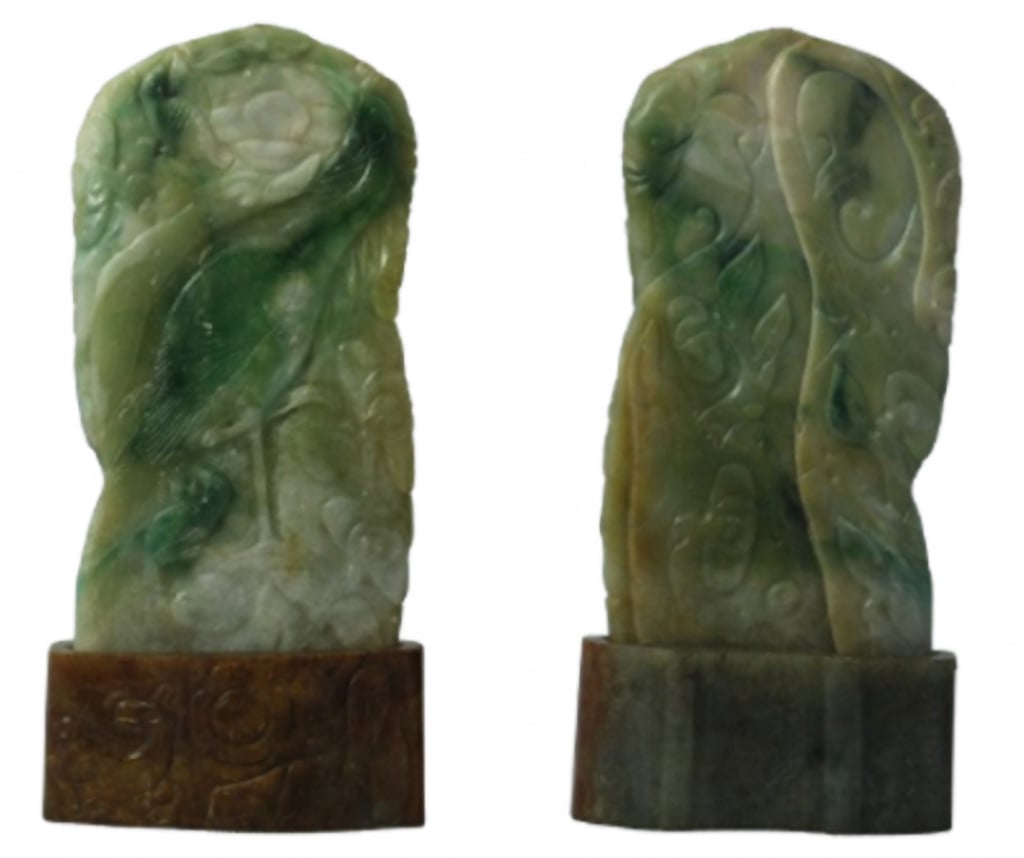
Front and back of the jade carving
PHOTO: LAM DONG MUSEUM
The feng shui artifacts in the collection of Nguyen Dynasty royal antiques at Lam Dong Museum are decorative objects in the study and to congratulate the king on the occasion of great ceremonies. They are small feng shui objects, made from jade, wood (combined with jade) and silver. Among them, there is a feng shui object made from jade with inconsistent colors. The main color is opaque white, with jade green and brown-yellow veins, with two separate parts: the body and the base. The body is made in the form of a thin rectangular slab, meticulously carved on both sides. One side is carved with the image of a large standing peacock, above and below are two small birds, interspersed with stylized flowers and leaves. One side is embossed with stylized flowers and leaves. The oval base is made from jade of the same material as the body. The front side is carved with the image of a deer, an old man and a round longevity character. The back side is carved with the words "Ngo sao son nhuoc ngu thai hien". The body is attached to the base by a narrow groove that is concavely carved to form a unified block.
There is a feng shui panel made of wood combined with jade, placed on a wooden stand with 4 legs. The feng shui panel has a square surface, carved with vine patterns. In the middle is a rectangular jade plate with opaque white corners, carved with decorative patterns of 4 bats, a jade gong, a jade vase, and two moon characters between the longevity characters and the return text. This is one of the feng shui panels used to wish the king or members of the royal family a long life on the occasion of a grand ceremony.
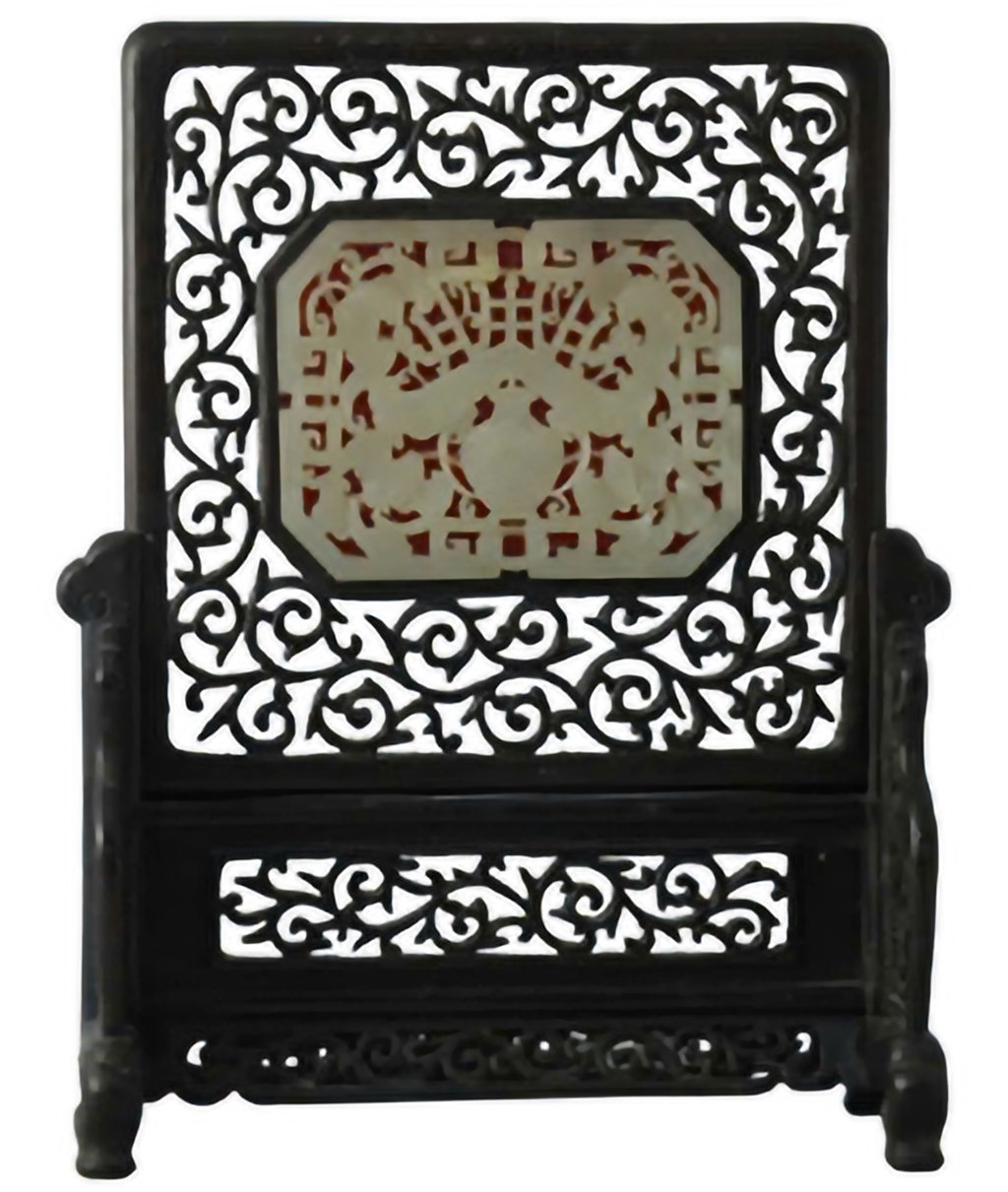
The statue is made from wood combined with jade, meticulously and delicately carved.
PHOTO: LAM DONG MUSEUM
TRAN PHONG WISHES KING BAO DAI A LONGEVITY
In particular, the stele-shaped stele is made of thin silver, with two embossed pillars on both sides, embossed with dragon and cloud patterns. On the top of the right pillar is a sword hilt (symbolizing strength), and on the left is a pen (symbolizing wisdom). On top of the arch-shaped stele, two dragons facing the sun (two symmetrical dragons) are embossed. The sun symbol is round and red. The front of the stele is a vertical rectangle, with a background of a "van" brocade pattern, surrounded by a T-shaped border. On the face of the stele, there are 5 lines of embossed Chinese characters, in the middle is a large silver line covered in gold "Van Tho Tu Tuan Dai Khanh". Below the stele is a bell-shaped stele, embossed with a dragon's head on the front, the base is a rectangular block with 3 levels.
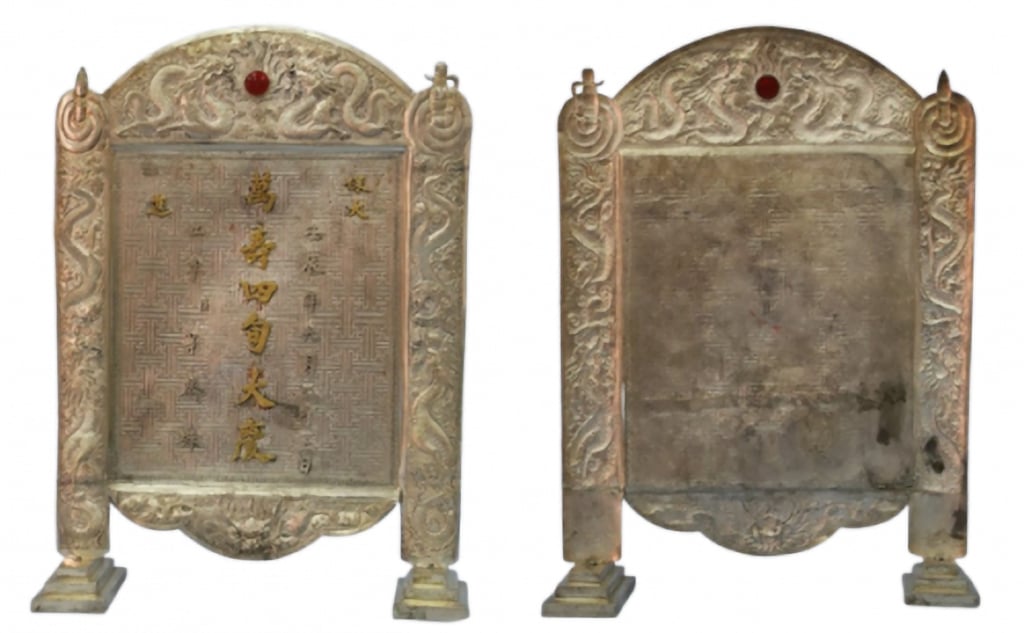
Silver seal "Long live the 40th birthday"
PHOTO: LAM DONG MUSEUM
This plaque was created by the Ministry of Public Works to celebrate King Bao Dai's 40th birthday. This is one of the few artifacts whose date can be determined absolutely through the inscription on the surface (September 23, Nham Thin year, or November 10, 1952) and is one of the artifacts that was made quite late, the time of making coincided with the time when King Bao Dai was in Da Lat under the "Hoang Trieu Cuong Tho" regime. This plaque is not in the group of artifacts brought from Hue to Da Lat before and was displayed in a large room in Palace III - Da Lat, from 1950 to 1955.
The Tran Phong statues at Lam Dong Museum are valuable artifacts, not only representing a part of the material and spiritual life of the Nguyen Dynasty royal palace but also expressing the concept and philosophy of life of the ancient Vietnamese people. At the same time, they also demonstrate the pinnacle of aesthetic and technical skills of craftsmen in the "Royal Workshops" of the Nguyen Dynasty.
Source: https://thanhnien.vn/co-vat-trieu-nguyen-o-xu-suong-mu-tran-phong-ngan-ta-khi-18525012221315906.htm


![[Photo] General Secretary concludes visit to Azerbaijan, departs for visit to Russian Federation](https://vphoto.vietnam.vn/thumb/1200x675/vietnam/resource/IMAGE/2025/5/8/7a135ad280314b66917ad278ce0e26fa)
![[Photo] National Assembly Chairman Tran Thanh Man chairs the meeting of the Subcommittee on Documents of the First National Assembly Party Congress](https://vphoto.vietnam.vn/thumb/1200x675/vietnam/resource/IMAGE/2025/5/8/72b19a73d94a4affab411fd8c87f4f8d)
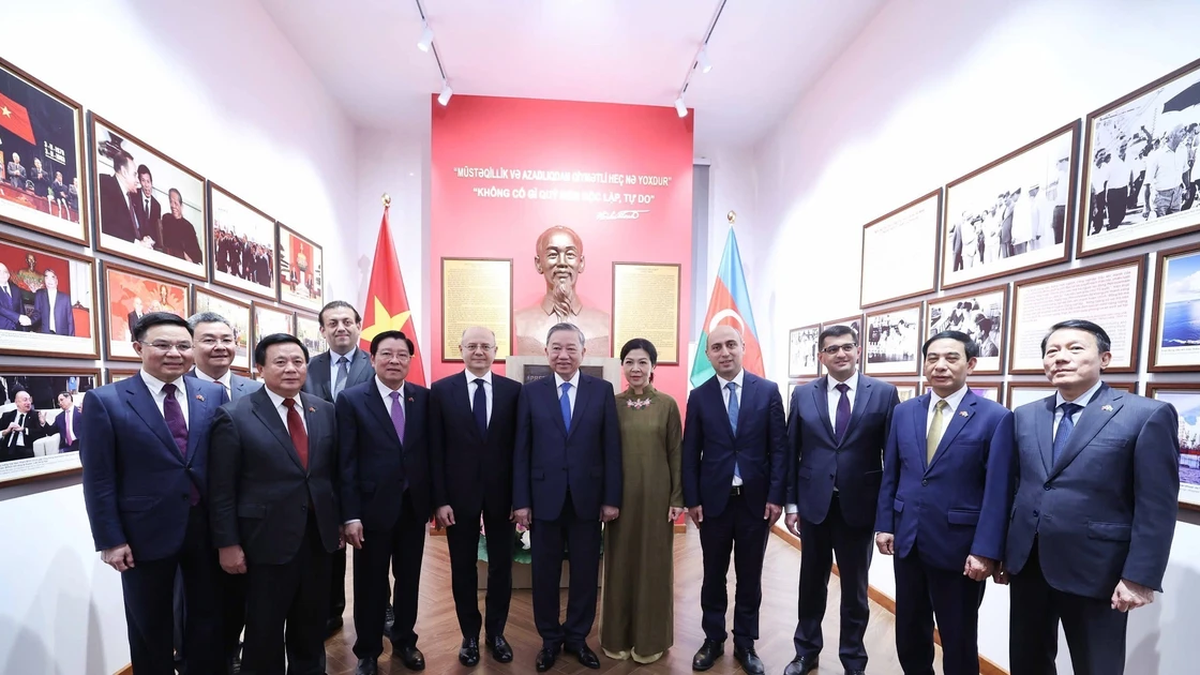
![[Photo] President Luong Cuong presents the decision to appoint Deputy Head of the Office of the President](https://vphoto.vietnam.vn/thumb/1200x675/vietnam/resource/IMAGE/2025/5/8/501f8ee192f3476ab9f7579c57b423ad)





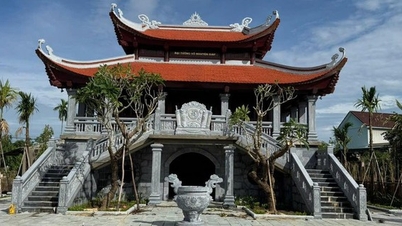




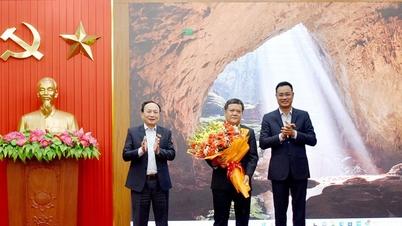

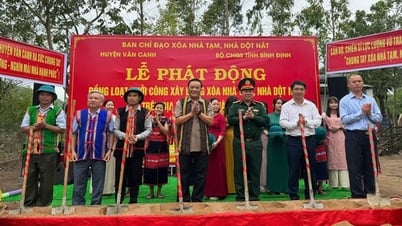


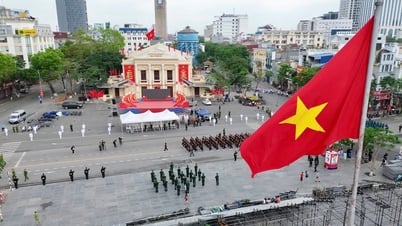





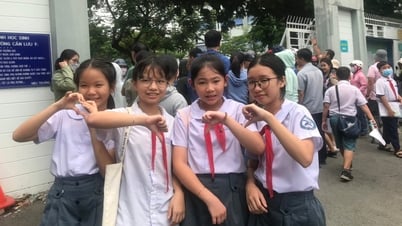

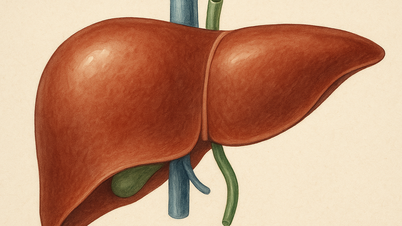

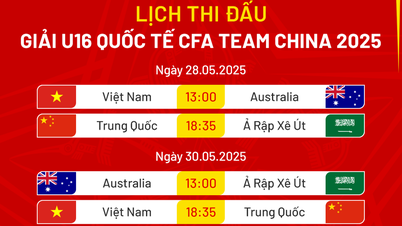
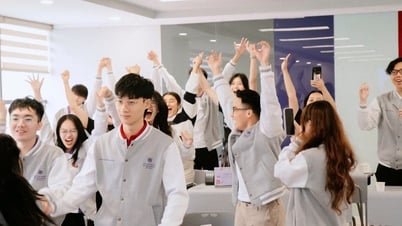
![[Photo] General Secretary To Lam receives leaders of typical Azerbaijani businesses](https://vphoto.vietnam.vn/thumb/1200x675/vietnam/resource/IMAGE/2025/5/8/998af6f177a044b4be0bfbc4858c7fd9)






























![[Photo] Prime Minister Pham Minh Chinh talks on the phone with Singaporean Prime Minister Lawrence Wong](https://vphoto.vietnam.vn/thumb/402x226/vietnam/resource/IMAGE/2025/5/8/e2eab082d9bc4fc4a360b28fa0ab94de)

















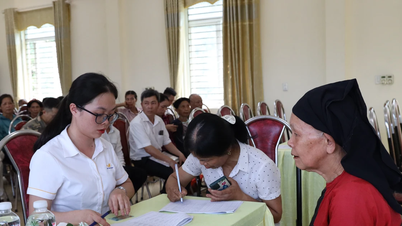















Comment (0)